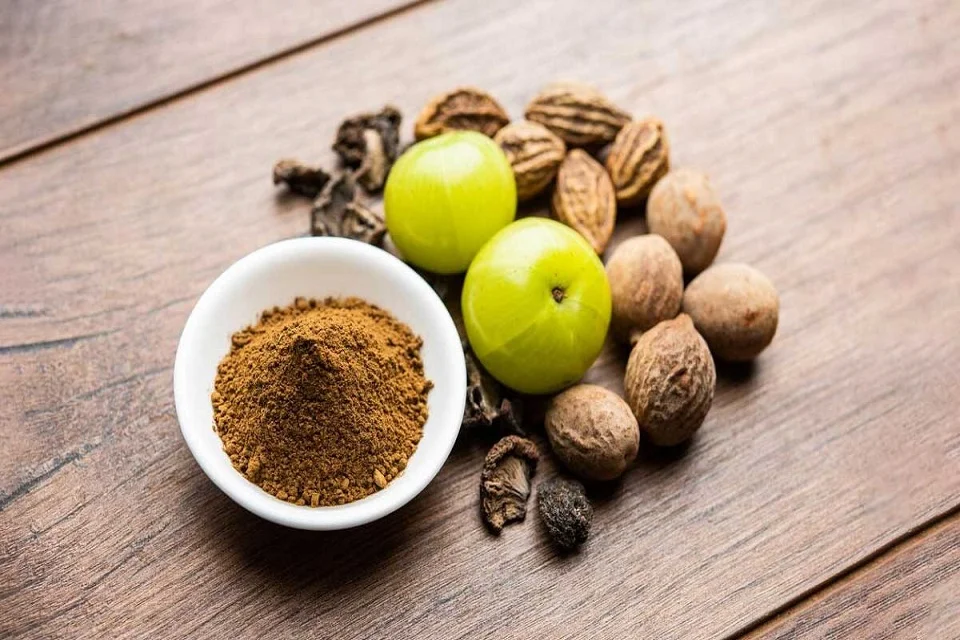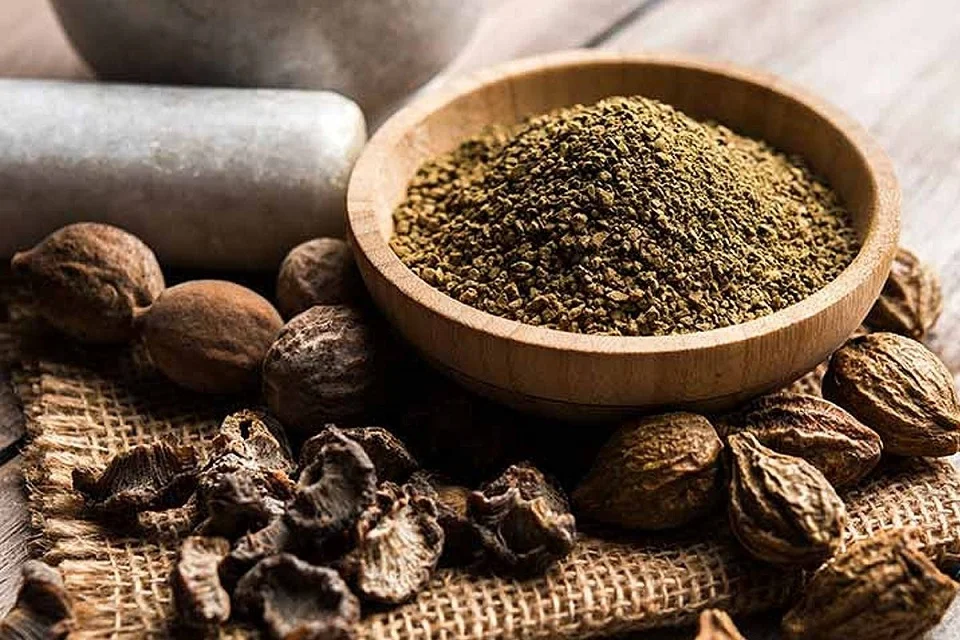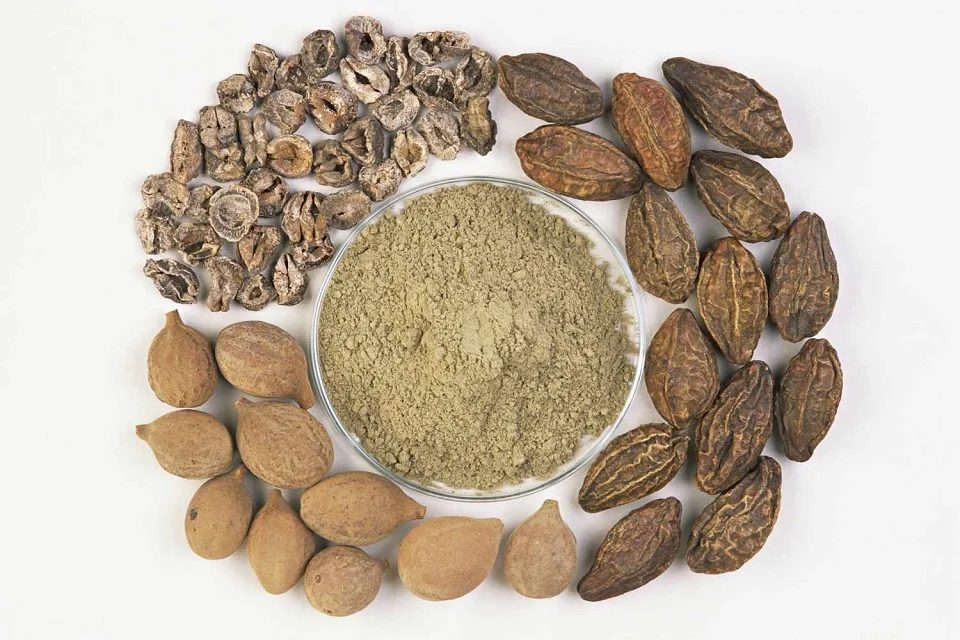Triphala benefits and its use according to ancient Ayurvedic texts
What is Triphala? Triphala, an ancient herbal remedy deeply rooted in Ayurvedic tradition, holds a revered place in holistic wellness …

What is Triphala?
Triphala, an ancient herbal remedy deeply rooted in Ayurvedic tradition, holds a revered place in holistic wellness with many Triphala benefits. Derived from the combination of three potent fruits – Amalaki (Emblica officinalis), Bibhitaki (Terminalia bellirica), and Haritaki (Terminalia chebula), Triphala embodies the essence of balance and rejuvenation. Its multifaceted benefits encompass digestive health, detoxification, and immune support. In Ayurvedic texts, Triphala is extolled for its ability to harmonize bodily functions, promote longevity, and enhance vitality. This article explores the rich heritage and therapeutic properties of Triphala and Triphala benefits, shedding light on its timeless significance in holistic health practices.
Formulation in Ayurveda
Triphala word is a combination of two words; Tri and Phala which means Three fruits. It is mentioned in many Ayurvedic preparations for its multiple uses. Triphala benefits mentioned in Samhita are many from its role in digestion to curing many eye conditions. According to Acharya Charak, taking the Triphala Rasayana (Triphala with honey and ghee) daily has the potential to make a person live for one hundred years devoid of old age and diseases. Acharya Sushrut indicated that the formula is useful for treating ulcers and wounds.
What are the properties of Triphala?
- Antioxidant Action
- Digestive Support
- Detoxification
- Immune Boosting
- Anti-inflammatory
- Weight Management
- Eye Health
- Oral Health
- Anti-aging
- Stress Reduction
What are the Benefits of Triphala?

- Stress Reduction:
Triphala polyphenols offer potential benefits by promoting resilience against stress-induced depression and cognitive impairment through regulating neurotransmitters, gut microbiota, and antioxidant pathways, as per the research.
Triphala exhibits neuroprotective effects by reducing oxidative stress-induced neurotoxicity, inhibiting apoptosis, promoting cell proliferation, and enhancing antioxidant enzyme activity, making it a promising therapeutic agent against neurological diseases. - Anti inflammatory:
Triphala Guggulu, a related formulation, shows anti-inflammatory, antimicrobial actions and mild laxative, making it effective in treating conditions like piles, Fistula, and inflammation - Anticancer agent :
Triphala demonstrates anticancer efficacy, inhibiting the growth of hepatocellular carcinoma cells without toxicity, highlighting its potential as a non-toxic anticancer agent - Wound healing:
Triphala offers wound healing potential through its bioactive compounds, promoting skin cell regeneration, collagen deposition, antioxidant properties, cytokine modulation, and anti-inflammatory effects. - Weight loss:
Triphala benefits include significant reductions in body weight, body mass index, and waist circumference without serious adverse events. - Oral health:
Triphala offers antioxidant, anti-inflammatory, and antibacterial effects, aiding in oral health by preventing plaque, gingivitis, and mouth sores. It can be an alternative to chlorhexidine mouthwashes. - Triphala in Dengue:
Triphala, particularly with Terminalia bellirica, inhibits Dengue virus in cells, reducing virus production significantly. It also decreases cytokine storm markers, potentially through gallic acid interaction with DENV NS5 protein.
What does Triphala contain?

पथ्याबिभीतधात्रीणां फलैः स्यात् त्रिफला समैः ।
फलत्रिकञ्च त्रिफला सा वरा च प्रकीर्तिता । ।४१ ।।
त्रिफला कफपित्तघ्नी मेहकुष्ठहरा सरा।
चक्षुष्या दीपनी रुच्या विषमज्वरनाशिनी । । ४२ ।।
(भावप्रकाश, हरीतक्यादिवर्गः ४१-४२)
| SI No | Sanskrit name | Botanical Name | Quantity |
|---|---|---|---|
| 01 | Pathya (Haritaki) | Terminalia chebula | 1 part |
| 02 | Bibhitaka | Terminalia bellirica | 1 part |
| 03 | Dhatri(Amalaki) | Emblica officinalis | 1 part |
What are the indications of Triphala mentioned in Ayurveda?
- Anaha (Distension of abdomen due to obstruction to the passage of urine and stools)
- Prameha (Urinary disorders)
- Netraroga (Eye disorder)
- Kaphapittaroga (Disease due to Kapha dosha and Pitta dosha)
- Kustha (Diseases of skin)
- Mandagni (Impaired digestive fire)
- Aruchi (Tastelessness)
- Vishamajvara (Intermittent fever)
Specific quality of main ingredient
- Haritaki (Terminalia chebula):
Mild Laxative: Supports bowel movements and alleviates digestive discomfort.
Detoxifying: Assists in eliminating toxins from the body.
Rejuvenating: Supports tissue regeneration and overall rejuvenation. - Bibhitaki (Terminalia bellirica):
Laxative: Promotes bowel regularity and relieves constipation.
Astringent: Contributes to detoxification and cleansing of the digestive tract.
Antimicrobial: Helps combat harmful bacteria and pathogens. - Amalaki (Emblica officinalis):
Rich in Vitamin C: Supports immune function and antioxidant activity.
Astringent: Helps in toning tissues and promoting digestive health.
Rejuvenating: Supports overall vitality and longevity.
Common Queries
When should I take Triphala? and with what?
Triphala is traditionally taken before bedtime or in the morning on an empty stomach. It can be consumed with warm water, milk, or honey to enhance its efficacy.
What happens if I take Triphala every day?
Taking Triphala daily may promote regular bowel movements, aid digestion, and support overall health.
What are the side effects of Triphala?
Common side effects of Triphala may include gastrointestinal discomfort such as diarrhea, abdominal cramps, and bloating, especially when taken in high doses.
Conclusion
In conclusion, Triphala stands as a revered gem in the treasure trove of Ayurvedic medicine, offering a myriad of Triphala benefits. Its unique blend of three potent fruits – Amalaki, Bibhitaki, and Haritaki – embodies the essence of holistic healing. From digestive support to detoxification and immune-boosting properties, Triphala has stood the test of time as a versatile herbal remedy.








[…] त्रिफला (Triphala) […]